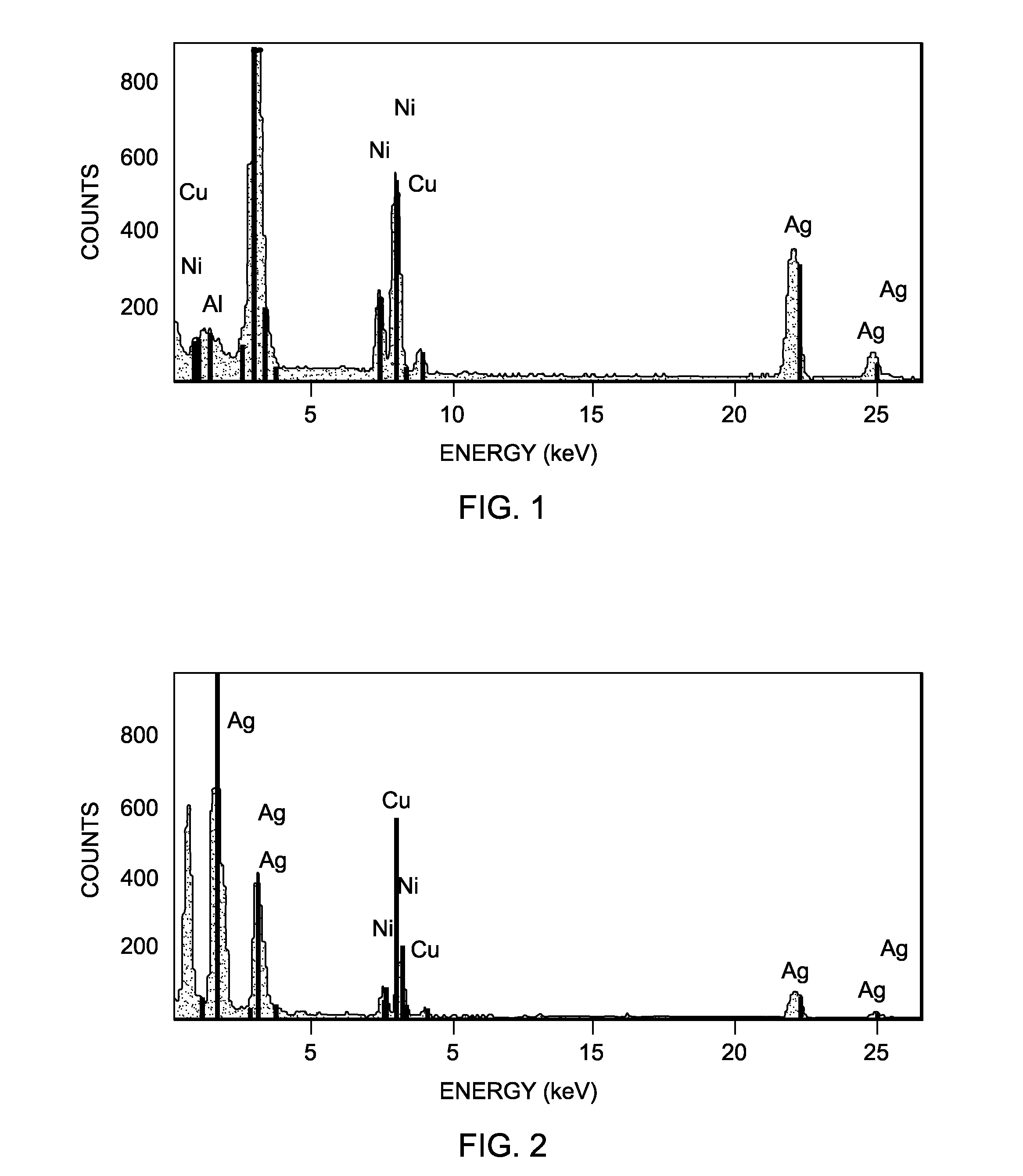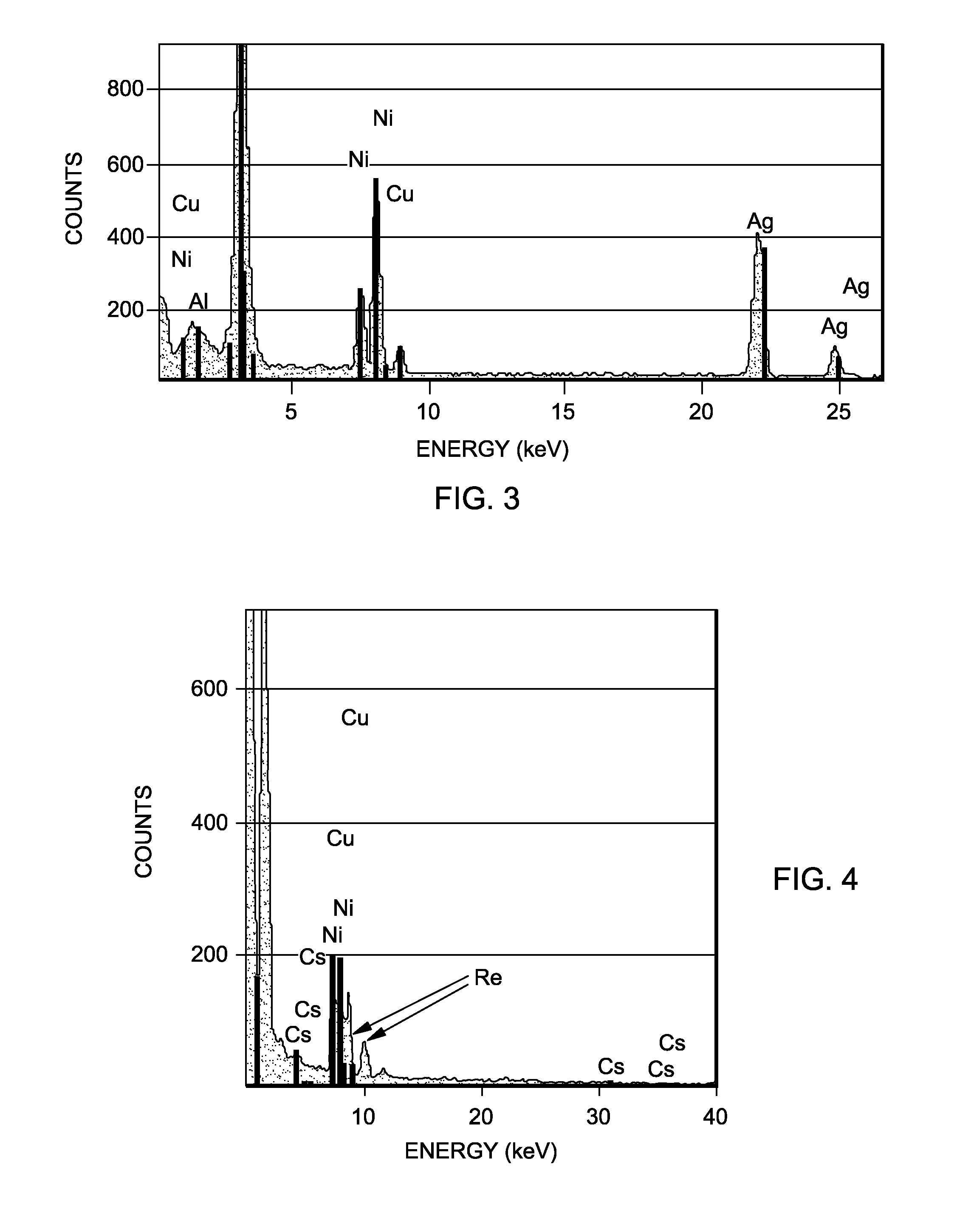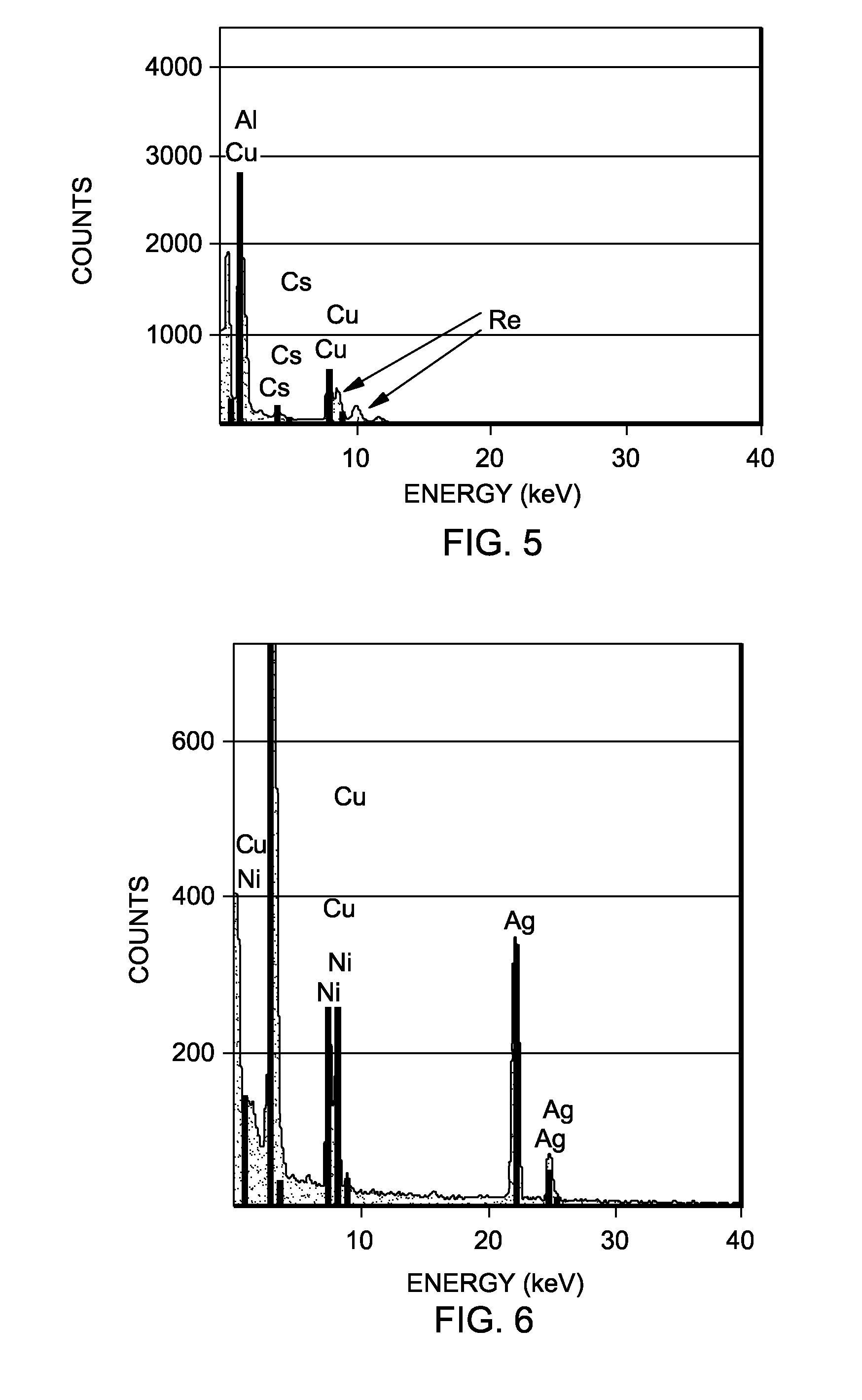Epoxidation process and microstructure
a technology of epoxidation process and microstructure, which is applied in the direction of catalyst activation/preparation, metal/metal-oxide/metal-hydroxide catalyst, physical/chemical process catalyst, etc., can solve the problems of high uneconomical, low economic value, and inability to fully understand the use of ethylene oxide as an industrial chemical, etc., to achieve the effect of promoting the amount of rhenium
- Summary
- Abstract
- Description
- Claims
- Application Information
AI Technical Summary
Benefits of technology
Problems solved by technology
Method used
Image
Examples
examples
The invention will now be described in more detail with respect to the following non-limiting examples.
Rhenium-containing epoxidation catalyst pellets were prepared and divided into first, second, and third sets of pellets.
The first set of pellets were kept in their freshly prepared state and not subjected to any activation process or further use.
The second set of pellets were crushed, ground and screened to provide a sample of 14-18 mesh particles. 6.5 grams of the material were then charged to a ¼″ outer diameter heated microreactor operated at a work rate of 540 (g EO per 1 kg catalyst per 1 hour) with a feed composition of ethylene, oxygen, and carbon dioxide of 15%, 7%, and 5%, respectively. The ethylene chloride concentration was 1.7 ppm. The temperature of the microreactor was increased to 245° C. at a rate of 2° C. per hour. After reaching 245° C., the temperature was increased at a rate of 1° C. per hour until a ΔEO of 2.2 was reached at which point the temperature was appr...
PUM
| Property | Measurement | Unit |
|---|---|---|
| temperature | aaaaa | aaaaa |
| temperature | aaaaa | aaaaa |
| wt. % | aaaaa | aaaaa |
Abstract
Description
Claims
Application Information
 Login to View More
Login to View More - R&D
- Intellectual Property
- Life Sciences
- Materials
- Tech Scout
- Unparalleled Data Quality
- Higher Quality Content
- 60% Fewer Hallucinations
Browse by: Latest US Patents, China's latest patents, Technical Efficacy Thesaurus, Application Domain, Technology Topic, Popular Technical Reports.
© 2025 PatSnap. All rights reserved.Legal|Privacy policy|Modern Slavery Act Transparency Statement|Sitemap|About US| Contact US: help@patsnap.com



